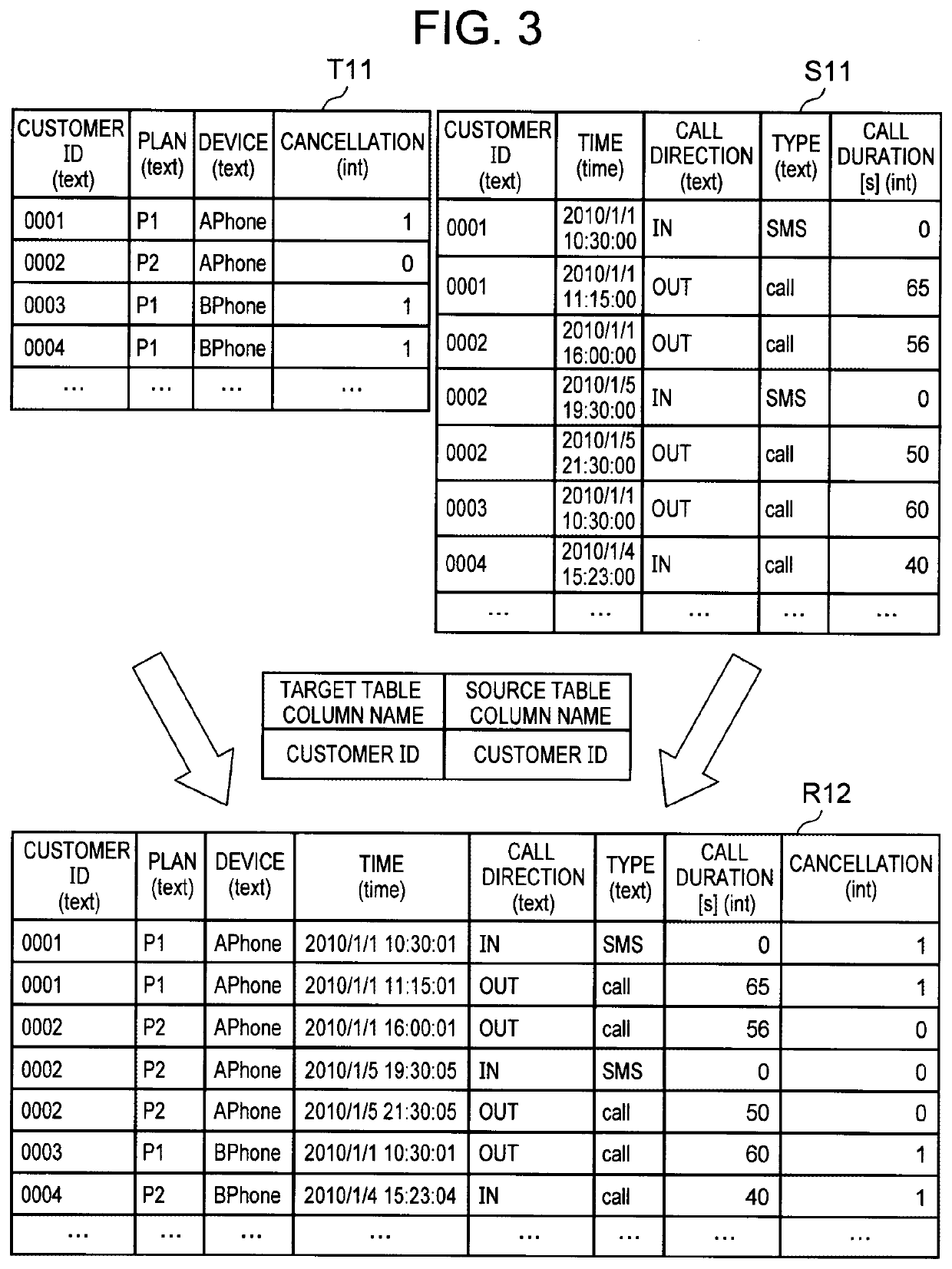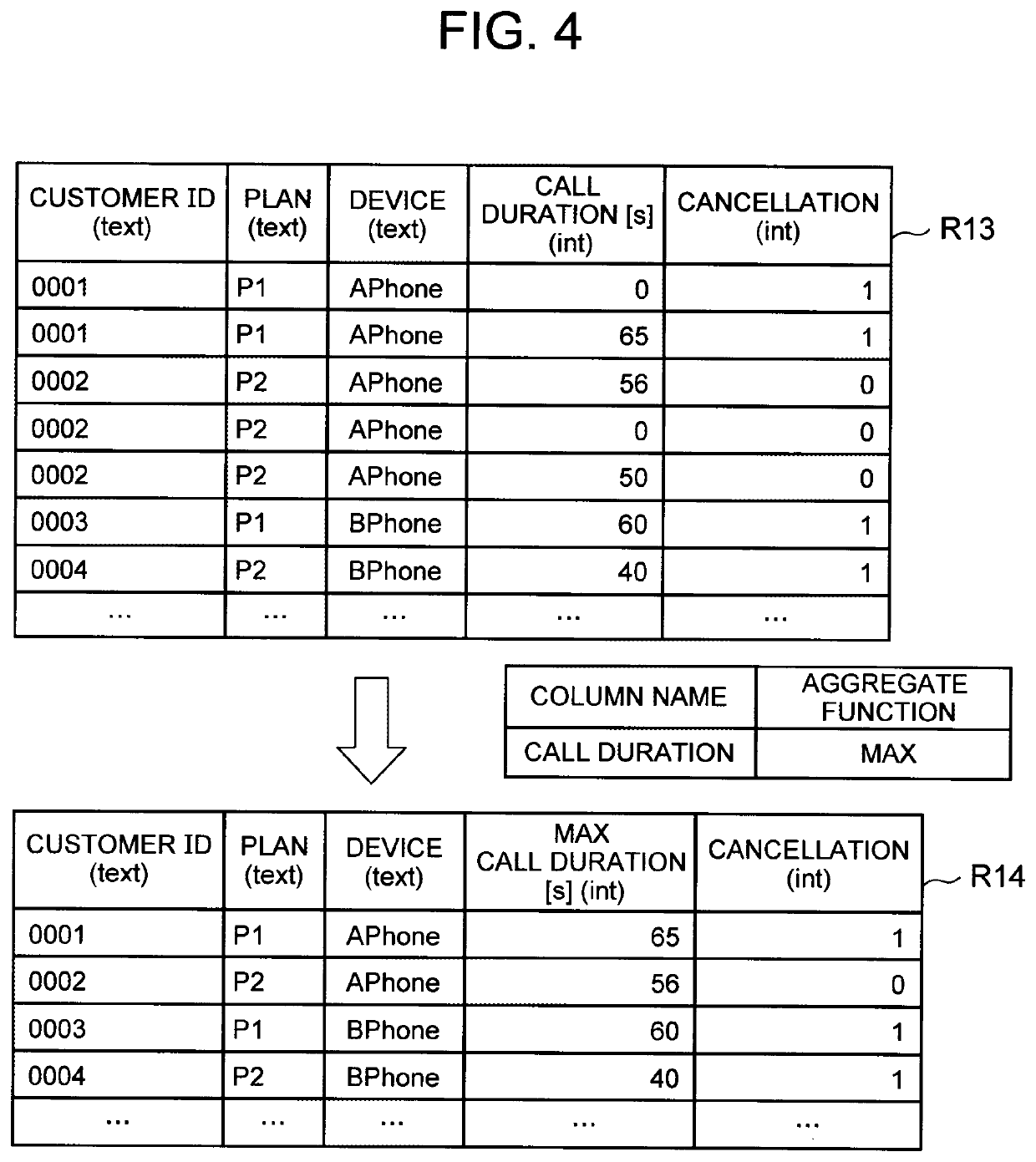Information processing system, feature description method and feature description program
- Summary
- Abstract
- Description
- Claims
- Application Information
AI Technical Summary
Benefits of technology
Problems solved by technology
Method used
Image
Examples
embodiment 1
[0045]FIG. 1 is a block diagram showing an exemplary configuration of a first embodiment of an information processing system according to the present invention. The information processing system 100 of the present embodiment includes a storage unit 11, an accepting unit 12, a descriptor generation unit 13, a feature generation unit 14, and a feature explanation generation unit 15.
[0046]The storage unit 11 stores a table (which may be hereinafter referred to as a first table) including a variable of a prediction target (i.e. an objective variable), and an aggregate of data (which may be hereinafter referred to as first table data) included in the first table. In the following description, the first table may be referred to as a target table. The storage unit 11 also stores a table other than the first table (which may be hereinafter referred to as a second table), and an aggregate of data (which may be hereinafter referred to as second table data) included in the second table. In the...
embodiment 2
[0122]A second embodiment of the information processing system according to the present invention will now be described. In the first embodiment, the way of generating a feature and a feature explanation without accepting information on a second table was described. In the present embodiment, the case of explicitly accepting the table information will be described. It should be noted that the configuration of the present embodiment is the same as that of the first embodiment.
[0123]In the present embodiment, the first template and the second template include a table parameter to which a value identifying the second table is assigned. The accepting unit 12 accepts, in addition to the joint information, the aggregation information, and the selection information, table information that is a value to be assigned to the table parameter. It should be noted that the first and second tables may have granularity equal to or different from each other.
[0124]FIG. 15 is a diagram illustrating a p...
embodiment 3
[0128]A third embodiment of the information processing system according to the present invention will now be described. The information processing system of the present embodiment creates training data on the basis of a generated feature, uses the created training data to learn a predictive model, and uses the predictive model to output a predicted result.
[0129]FIG. 18 is a block diagram showing an exemplary configuration of the third embodiment of the information processing system according to the present invention. The information processing system 200 in the present embodiment includes a storage unit 11, an accepting unit 12, a descriptor generation unit 13, a feature generation unit 14, a feature explanation generation unit 15, a learning unit 16, a prediction unit 17, a training data generation unit 18, and a predicting data generation unit 19.
[0130]That is to say, as compared to the information processing system 100 in the first embodiment, the information processing system 20...
PUM
 Login to View More
Login to View More Abstract
Description
Claims
Application Information
 Login to View More
Login to View More - R&D
- Intellectual Property
- Life Sciences
- Materials
- Tech Scout
- Unparalleled Data Quality
- Higher Quality Content
- 60% Fewer Hallucinations
Browse by: Latest US Patents, China's latest patents, Technical Efficacy Thesaurus, Application Domain, Technology Topic, Popular Technical Reports.
© 2025 PatSnap. All rights reserved.Legal|Privacy policy|Modern Slavery Act Transparency Statement|Sitemap|About US| Contact US: help@patsnap.com



